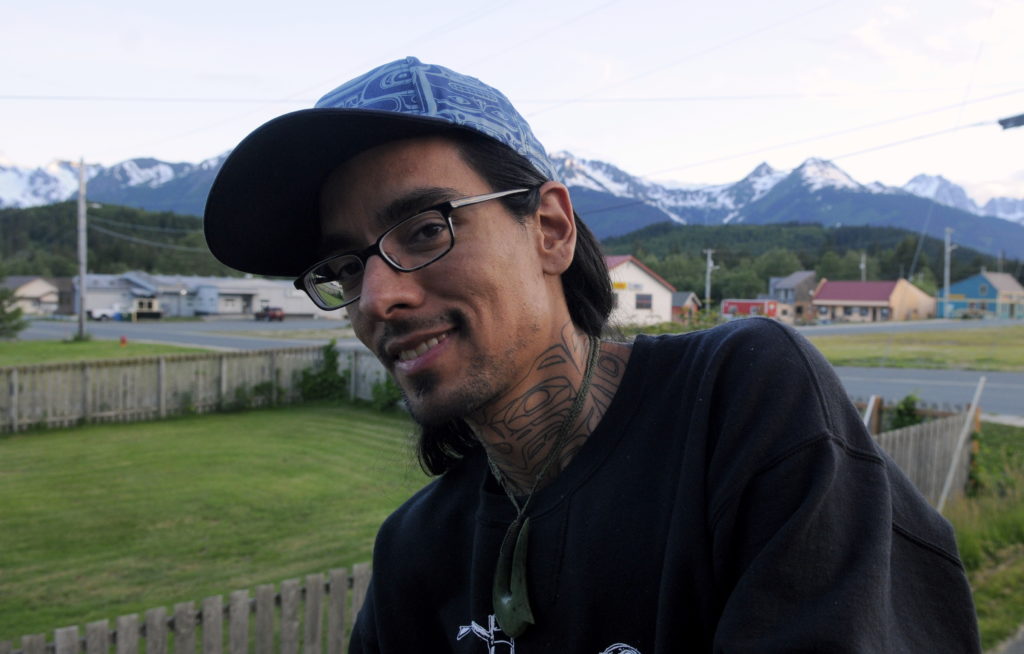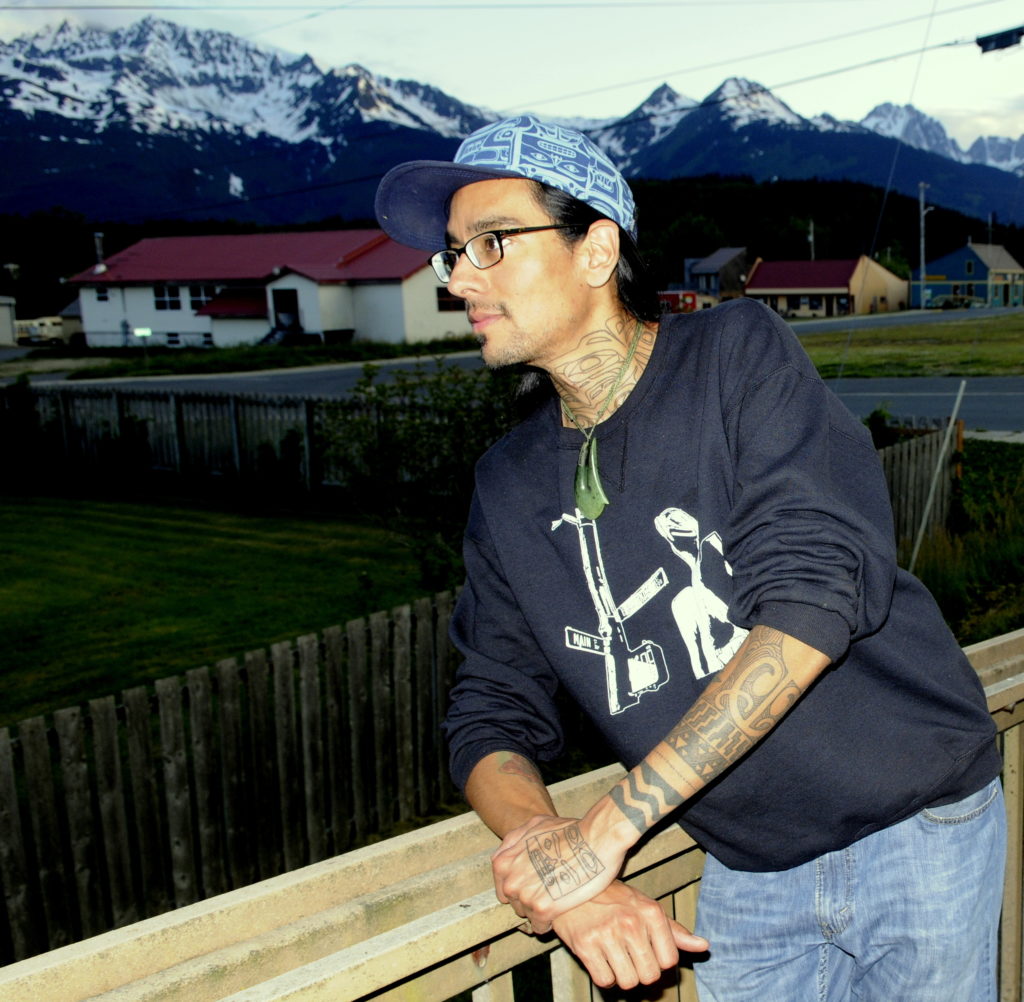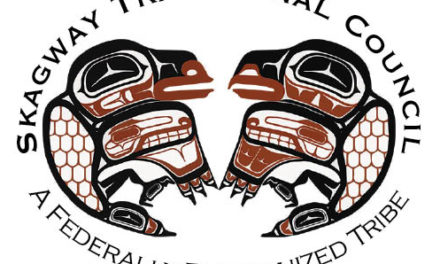
Nahaan uses old and new methods to tattoo Indigenous designs on his clients. He calls his tattoos ‘permanent regalia.’ (Jillian Rogers)
Two Indigenous artists captivated a small audience in Haines on Monday night talking tats, family, history and culture. The pair melds old and new ways when tattooing clients with clan symbols and other traditional designs.
The traditional aboriginal methods of dying skin might sound more painful than the modern day, ink-spewing mechanical techniques. But the significance and ceremony behind the old ways make a little stinging skin worth it. Nahaan is a Native artist with Tlingit and Inupiat roots. He says for a lot of people, the traditional ways actually hurt less.
“The way I look at it is when we have our traditional tattoos, we indigenize every space that we’re in, thereby reclaiming ourselves a little more, reclaiming our lands, reclaiming our ways of life through the power of identity,” he says.
The customary ways include skin sewing, also called skin stitching, where sinew or thread is soaked in natural dyes like ash and water, and drawn under the skin repeatedly to create a pattern.
“To me, it’s my favorite way to tattoo because it’s such a different process than the typical machine, using electricity and more foreign technology.”
Hand poking is another ancient form of tattooing. It is the meticulous puncturing of the skin with an ink-soaked needle. The results are meaningful designs, applied with care and contemplation.
“So, as I continue the journey on in learning, relearning this process of tattooing, the elements, the tools and the process are really educating me in all these different ways.”
Nahaan flipped through a slideshow of his work on the big screen at the Haines Sheldon Museum on Monday. Markings big and small, intricate and simple adorn men and women of all ages and backgrounds. He only tattoos Indigenous designs, he says, but he uses the old ways and the newer methods. And he’s been practicing the art form for about six years.
“I never tattooed an American flag, or an ex-wife’s name or anything like that. It was always for the perpetuation of our cultural practice that had been shamed away from our people.”
Nahaan was born and raised in Seattle, where he currently lives. He has spent some of his life in Ketchikan and Juneau, but, he says, his roots are in Klukwan. He has learned the Tlingit language and immersed himself in all aspects of the values and beliefs. He says his tattoos help ignite and magnify the culture, but they also help heal.
He often trades his work for fish or other offerings from his customers. He says accepting trades in lieu of money makes his work more available.
“That’s what I want more than anything is for our people to be proud again, for our people to be empowered and knowledgeable and motivated to learn who they are even more. The most beneficial trade that I’ve had would be one that continues to show me that the person is investing more in learning about my culture and their culture.”
Nahaan believes that the tattoos offer a chance to showcase ‘permanent regalia.’ He says before taking that first plunge with a needle, he asks people how they act when they’re wearing traditional dress.
“Generally, you don’t go to the bar when you’re wearing your regalia,” he says. “You’re a little more on your toes when you’re wearing something very prestigious like that. And so, we can look at our tattoos that same way. We’re not just who we are when it’s Indigenous Peoples Day, we’re not just Indigenous when a potlatch is happening, we’re not just Indigenous when it’s time to dance and sing.”
Choosing who he tattoos has a lot to do with the person’s mental state, and their approach. He says that oftentimes the physical discomfort can help release emotional pain, and make room for positive experiences. He did just that with his mother, Frieda Eide. She shared her story with the group on Monday, recalling several trips to treatment centers for alcohol addiction. She says it was Nahaan that helped show her all she could achieve by learning about, and embracing, her background. She says she’s been sober for four years now.
“My journey has been a good journey,” she tells the group. “I’m in a dance group, I’m learning my language, I’m so grateful. This guy saved my life. Nobody else could do that in the world. I have my culture, I have a reason to be here and I live with pride.”
Nahaan was also joined by Nakkita Trimble, a First Nations tattoo artist from northern British Columbia. Like Nahaan, Trimble discovers more about herself and her history through the practice of skin sewing and hand poking.
For a sampling of their work, click here to visit Trimble’s website, and here for Nahaan’s.









